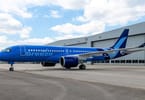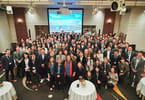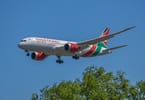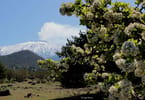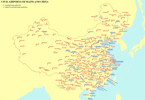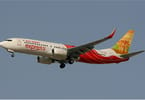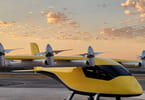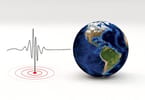Tourism in Australia is among a “fantastic five” of super-growth sectors – alongside gas, agribusiness, international education and wealth management – which Deloitte believes could add about $250 billion to the economy over the next 20 years, and an additional $25 billion to national GDP in 2033.
International tourism will be a key driver of Australia’s future prosperity, powered by Asia’s growth and a new generation of travelers looking for space, nature and luxury experiences according to a new Deloitte report, Positioning for prosperity? Catching the next wave.
As an indication of the magnitude of Australia’s tourism opportunity, the report projects the global tourism industry growing at 4.1% (in real terms) over the next two decades – more than 20% faster than global GDP growth.
Speaking at a Tourism and Transport Forum event in Sydney today, Deloitte’s Tourism, Hospitality and Leisure Leader, Lachlan Smirl said Australia was already opening its doors to a new generation of inbound visitors whose numbers, and tourist wallets, were growing.
“Brand Australia has, for some time, been about our natural wonders, wide-open spaces, distinctive landmarks and, more recently, our fine food and wine and sophisticated urban centers,” Mr. Smirl said.
“And it is these very same assets that are underpinning the next wave of growth.
“The combination of vibrant cities and world class natural assets is a compelling value proposition. Not only are natural tourism assets among the most important drivers of international travel decisions, Australia’s natural assets are ranked number one by 11 of our most significant tourism markets, including, critically, China.
“And the longer term growth story holds even greater promise. China is already our second-biggest source of tourists – and the largest in terms of visitor expenditure – and its prominence, and that of emerging Asia more broadly, will only grow over time as the region’s middle class expands.”
Deloitte Access Economics is projecting visitors from markets like China, India and Indonesia to more than treble over the next 20 years and tourism exports to grow from the current $26 billion to $57 billion in real terms by 2033.
According to the report, the third in Deloitte’s Building the Lucky Country series, Australia’s tourism advantage is underpinned by:
• Proximity to Asia and its burgeoning middle class and the demand for international travel that this is generating (by 2030, two thirds of the world’s middle class will reside in the Asia Pacific region).
• Natural assets: Including nearly 60,000 kilometers of mostly unadulterated shoreline, an average of 3,000 hours of sunshine a year, rainforests, beaches, outback and urban areas.
• Safety and languages: Australia is a politically and environmentally safe destination and offers the convenience of being both English speaking and offering other languages.
• Vibrant city experiences, including iconic landmarks such as the Sydney Opera House.
• Cheaper flights: Increased air access, greater levels of competition and low-cost carriers offering more flights into Australia have created many more affordable options for both leisure and business travelers.
• Education: The caliber of our educational sector encourages foreign students to become ‘education tourists’ who in turn encourage friends and family to visit.
Mr. Smirl said that while the outlook was positive, challenges still remained.
“We know that tourism infrastructure, skills and a shortage of hotel rooms are all issues governments and the industry are aware of and are keen to address. But the fact that these issues have persisted for some time highlights that the industry still has work to do,” he said.
Key issues identified in the report include:
• Tourism infrastructure hasn’t always kept pace with changing demand: Australia’s natural assets on their own have worked in the past, and these drawcards remain. But tourists from Asia also seek high-end experiences and entertainment.
• Trouble getting about: Travelling to and around a big country like Australia is a logistical challenge made more difficult when transport corridors are clogged, or near capacity. Domestic and international aviation capacity will have to grow and port infrastructure needs to be upgraded to support the world’s biggest cruise liners.
• Too few rooms: While there are positive signs that rising profitability and coordinated promotion activities of industry and government are spurring investment, the industry will have to work hard to meet the Tourism2020 target.
• Scarce skills: The mining boom has had an impact on the number of workers available to fill hospitality positions, with industry analysis by Deloitte estimating that as many as 35,000 jobs may be unfilled. The critical challenge of ensuring we have a tourism workforce capable of giving visitors a world-class experience will remain.
• Challenges of a cottage industry: The dominance of smaller tourism operators can result in a fragmented experience for visitors.
Mr. Smirl said Australia needed to ensure that the appeal of its unique tourism assets was complemented by supporting infrastructure and a policy environment and industry strategy conducive to it realizing its growth potential.
“We need to invest in our airports and ensure conditions are attractive for international airlines, especially low cost carriers. Equally, we need to invest in other tourism infrastructure such as hotels and attractions to support and leverage our existing assets.
“Travel is an experience, so we need to optimize this experience with a skilled, professional and ‘Asia-ready’ workforce.
“And we need to continue to embrace technology. Travelers today want to explore and book online and, in what is increasingly proving a great marketing device, they want to share on line. So we need to continue to embrace digital.
“If we can succeed across these areas – if we can orientate our tourism industry to capitalize on the opportunity we are confronting – there is no question the economic benefits for Australia will be significant.”
WHAT TO TAKE AWAY FROM THIS ARTICLE:
- Tourism in Australia is among a “fantastic five” of super-growth sectors – alongside gas, agribusiness, international education and wealth management – which Deloitte believes could add about $250 billion to the economy over the next 20 years, and an additional $25 billion to national GDP in 2033.
- China is already our second-biggest source of tourists – and the largest in terms of visitor expenditure – and its prominence, and that of emerging Asia more broadly, will only grow over time as the region's middle class expands.
- Speaking at a Tourism and Transport Forum event in Sydney today, Deloitte's Tourism, Hospitality and Leisure Leader, Lachlan Smirl said Australia was already opening its doors to a new generation of inbound visitors whose numbers, and tourist wallets, were growing.



